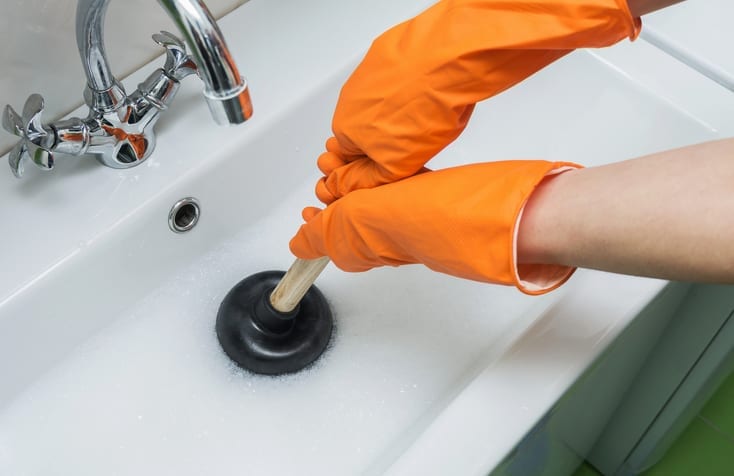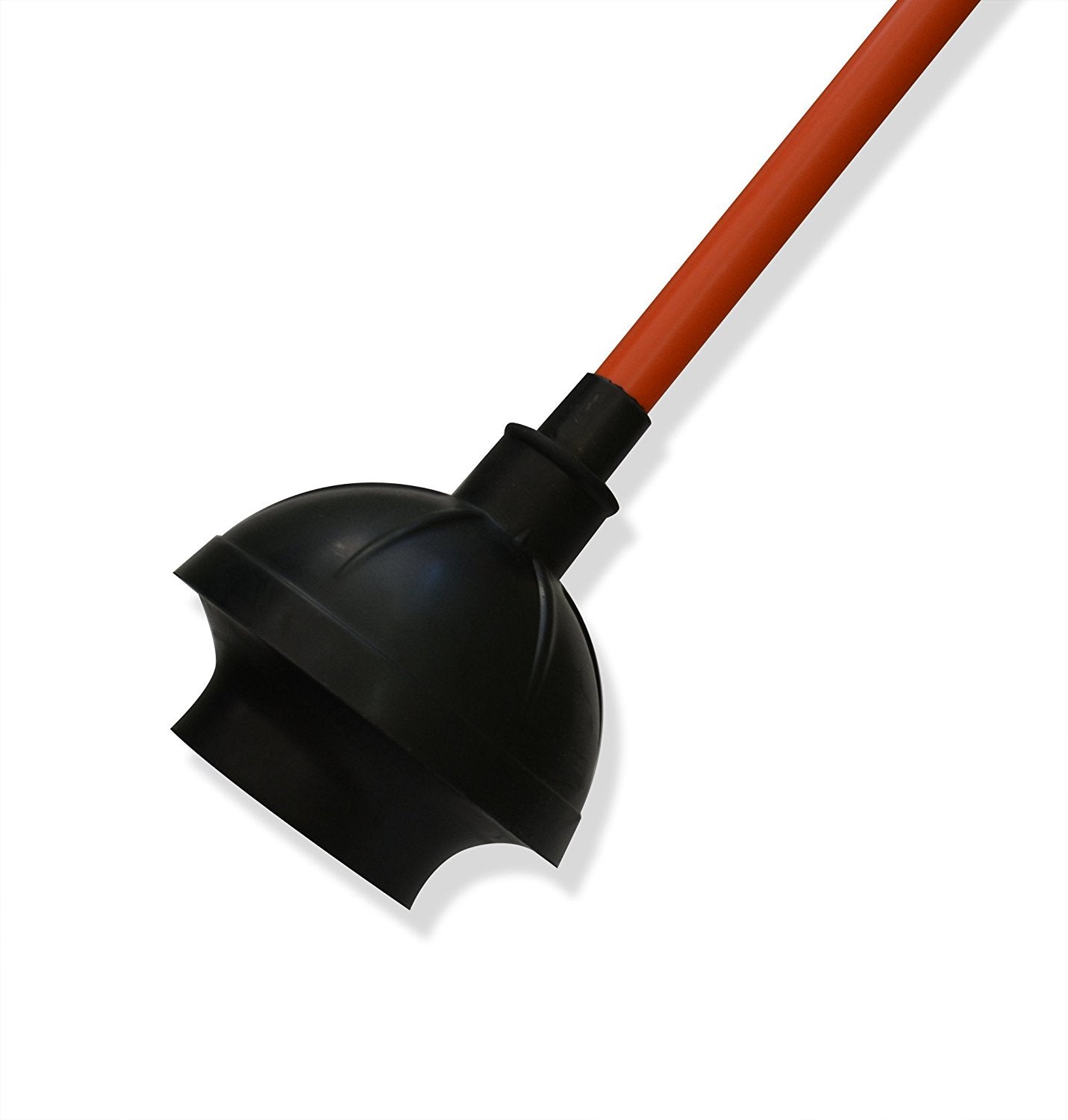Mastering Plungers and Drain Cleaner: Professional Strategies
Mastering Plungers and Drain Cleaner: Professional Strategies
Blog Article
Just about everyone has their unique way of thinking involving Tips on How to Effectively Use a Plunger.

Intro
Correct maintenance of family drains is crucial for preventing clogs and making certain smooth water flow. One of the secret tools in every property owner's toolkit is the bettor, along with various drain cleaners created to take on persistent obstructions effectively. This short article checks out exactly how to utilize plungers and drainpipe cleansers effectively to keep your drains moving openly.
Area 1: Understanding Plungers
Kinds of Plungers
There are a number of sorts of bettors readily available, each made for various sorts of drains pipes and obstructs. The most usual kinds consist of mug bettors, flange plungers, and accordion plungers.
How Plungers Work
Bettors work with the concept of developing pressure and suction to dislodge clogs. When correctly applied over a drain, they create a vacuum that can pull out debris or break up blockages.
Choosing the Right Bettor
Selecting the ideal bettor depends on the type of drain and the nature of the clog. Cup plungers are ideal for sinks and tubs, while flange plungers are much better fit for bathrooms because of their layout.
Common Mistakes with Bettors
Preventing these blunders ensures effective plunging: improper seal around the drain, insufficient force, and unclear surrounding debris.
Section 2: Using Plungers Effectively
Preparation
Prior to plunging, make certain the bettor covers the drainpipe completely and develops a tight seal. Clear any noticeable particles around the drain opening.
Technique
Start with mild plunging movements to construct suction. Boost stress gradually, making use of a stable rhythm. Repeat as required until the drain gets rid of.
Repairing Tips
If plunging doesn't work, attempt readjusting the seal, using oil jelly for a better seal, or utilizing a different kind of bettor.
Section 3: Understanding Drainpipe Cleaners
Sorts Of Drainpipe Cleansers
Drain pipes cleansers can be chemical or chemical. Chemical cleansers use solid chemicals to dissolve clogs, while enzymatic cleaners utilize natural enzymes to break down organic matter.
Exactly How Drainpipe Cleaning Company Work
Chemical cleaners react with clogs to dissolve them, while enzymatic cleaners break down organic materials like hair and oil without damaging pipelines.
Safety and security Factors to consider
Constantly put on handwear covers and eye security when utilizing chemical drain cleaners. Ensure adequate air flow and adhere to maker directions very carefully.
Eco-Friendly Alternatives
Take into consideration utilizing vinegar and baking soft drink or enzyme-based cleaners for eco-friendly alternatives that are much safer for pipelines and the atmosphere.
Area 4: Utilizing Drainpipe Cleaners Successfully
Application Strategies
Pour chemical cleansers straight into the drain opening. Permit them to benefit the recommended time before purging with warm water. Chemical cleansers must sit overnight.
Safety measures
Avoid blending different sorts of cleaners, as this can generate toxic fumes. Never utilize chemical cleaners combined with a plunger, as spilling can take place.
Taking Care Of Stubborn Clogs
For persistent clogs, consider using a plumbing serpent or calling a specialist plumber to prevent damages to pipelines.
Final thought
To conclude, understanding how to make use of bettors and drain cleansers successfully is necessary for preserving healthy pipes systems. By choosing the right devices and methods, homeowners can take on minor obstructions and avoid significant plumbing concerns down the line.
How to Use a Plunger to Unclog a Drain
The humble plunger is a simple yet effective tool for breaking clogs in sinks, tubs and toilets. This handy tool is easy to use. You can make the most of its power if you understand how it works. Ready to dive in? Here’s what you need to know.
Safety First!
Never use a plunger with drain chemicals. Water will splash as you work, and the chemicals can spatter, burning skin and eyes. It’s a good idea to use rubber gloves and wear safety goggles when you work on a clog.
Choose the Right Tool for the Job
Plungers come in two different styles. Sinks, bathtubs and showers require a cup plunger. Like its name suggests, the rubber end is shaped like a cup. Use a flange plunger on toilets. These plungers have a rubber funnel extending from the cup. A plunger needs to be big enough to cover the drain.
Ready, Set, Plunge!
Coat the rim: Coat the plunger rim with petroleum jelly. This helps make a better seal.
Block outlets: Hold a wet rag over nearby outlets such as the overflow vent or the drain in a second sink.
Release air: Insert the plunger at an angle into the water. Water will displace air in the cup. A water-filled cup is more forceful than one filled with air.
Keep the plunger upright: Hold the plunger perpendicular to the drain. Use fast, forceful strokes, but make the first stroke gentle. The first stroke can create a splash if the cup still contains air. Thrust the plunger 15 to 20 times.
Snap off the plunger: The final stroke should be a strong upward motion that ends when the plunger snaps off the drain.
Repeat the process: you may need to repeat this sequence several times. When the water drains away, your work is done. High-five! https://plumbernw.com/blog/how-to-use-a-plunger-to-unclog-a-drain/

Application Strategies
Pour chemical cleansers straight into the drain opening. Permit them to benefit the recommended time before purging with warm water. Chemical cleansers must sit overnight.
Safety measures
Avoid blending different sorts of cleaners, as this can generate toxic fumes. Never utilize chemical cleaners combined with a plunger, as spilling can take place.
Taking Care Of Stubborn Clogs
For persistent clogs, consider using a plumbing serpent or calling a specialist plumber to prevent damages to pipelines.
Final thought
To conclude, understanding how to make use of bettors and drain cleansers successfully is necessary for preserving healthy pipes systems. By choosing the right devices and methods, homeowners can take on minor obstructions and avoid significant plumbing concerns down the line.
How to Use a Plunger to Unclog a Drain
The humble plunger is a simple yet effective tool for breaking clogs in sinks, tubs and toilets. This handy tool is easy to use. You can make the most of its power if you understand how it works. Ready to dive in? Here’s what you need to know.
Safety First!
Never use a plunger with drain chemicals. Water will splash as you work, and the chemicals can spatter, burning skin and eyes. It’s a good idea to use rubber gloves and wear safety goggles when you work on a clog.
Choose the Right Tool for the Job
Plungers come in two different styles. Sinks, bathtubs and showers require a cup plunger. Like its name suggests, the rubber end is shaped like a cup. Use a flange plunger on toilets. These plungers have a rubber funnel extending from the cup. A plunger needs to be big enough to cover the drain.
Ready, Set, Plunge!
Coat the rim: Coat the plunger rim with petroleum jelly. This helps make a better seal. Block outlets: Hold a wet rag over nearby outlets such as the overflow vent or the drain in a second sink. Release air: Insert the plunger at an angle into the water. Water will displace air in the cup. A water-filled cup is more forceful than one filled with air. Keep the plunger upright: Hold the plunger perpendicular to the drain. Use fast, forceful strokes, but make the first stroke gentle. The first stroke can create a splash if the cup still contains air. Thrust the plunger 15 to 20 times. Snap off the plunger: The final stroke should be a strong upward motion that ends when the plunger snaps off the drain. Repeat the process: you may need to repeat this sequence several times. When the water drains away, your work is done. High-five! https://plumbernw.com/blog/how-to-use-a-plunger-to-unclog-a-drain/

I discovered that content on How to Use a Plunger to Unclog a Toilet or Drain when doing a search on the internet. So long as you enjoyed our article plz don't forget to share it. Bless you for your time. Don't hesitate to check up our blog back soon.
Book Now! Report this page